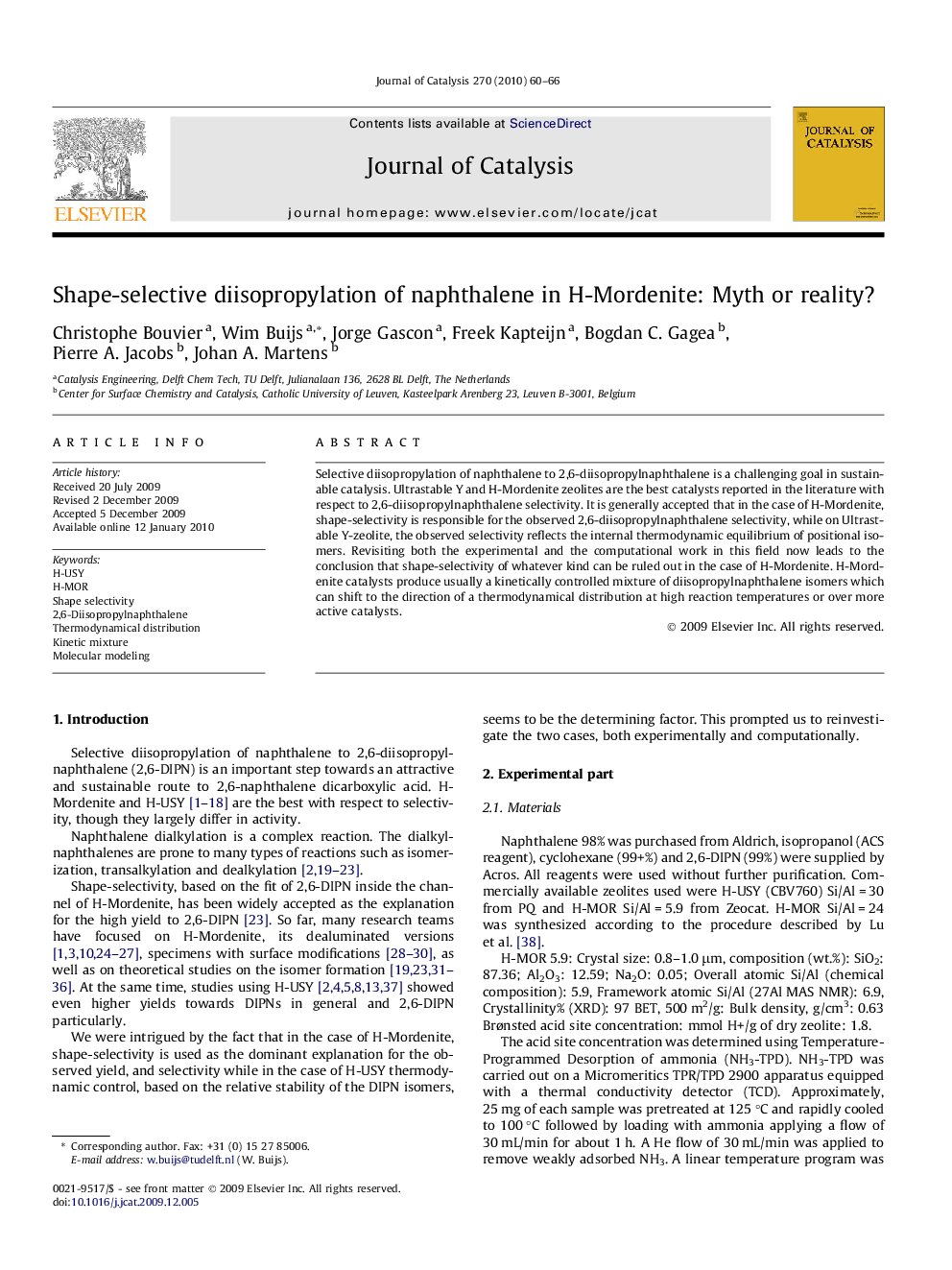| Article ID | Journal | Published Year | Pages | File Type |
|---|---|---|---|---|
| 62377 | Journal of Catalysis | 2010 | 7 Pages |
Selective diisopropylation of naphthalene to 2,6-diisopropylnaphthalene is a challenging goal in sustainable catalysis. Ultrastable Y and H-Mordenite zeolites are the best catalysts reported in the literature with respect to 2,6-diisopropylnaphthalene selectivity. It is generally accepted that in the case of H-Mordenite, shape-selectivity is responsible for the observed 2,6-diisopropylnaphthalene selectivity, while on Ultrastable Y-zeolite, the observed selectivity reflects the internal thermodynamic equilibrium of positional isomers. Revisiting both the experimental and the computational work in this field now leads to the conclusion that shape-selectivity of whatever kind can be ruled out in the case of H-Mordenite. H-Mordenite catalysts produce usually a kinetically controlled mixture of diisopropylnaphthalene isomers which can shift to the direction of a thermodynamical distribution at high reaction temperatures or over more active catalysts.
Graphical abstractFigure optionsDownload full-size imageDownload high-quality image (59 K)Download as PowerPoint slide
